Nintendo DS
Top 10 Best Nintendo DS Games of All-Time!
After dominating the handheld market for 25 years with the Game Boy brand, Nintendo faced new competition from Sony. Nintendo had previously been challenged by Atari, Sega, NEC, SNK, Bandai, and Nokia among others, but Sony had already usurped Nintendo as the market leader in the console space and were entering the portable market with a lot of momentum behind them. The PSP aimed to knock the Game Boy Advance down a peg or two, so the Nintendo DS was unveiled as an experimental “third pillar” in Nintendo’s lineup. Featuring dual screens and touchscreen functionality, the Nintendo DS offered all sorts of new gameplay experiences. Experimental games like Nintendogs and Brain Age helped to broaden demographics, and the “third pillar” eventually became the Nintendo’s most successful system ever.
10
Dragon Quest IX
2009
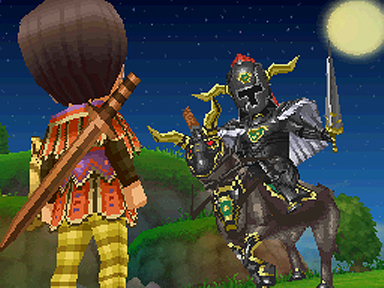
The decision to release Dragon Quest IX on a handheld system was met with a lot of skepticism, but the series was never really about graphics in the first place. Instead of using the blockbuster model adopted by modern Final Fantasy games, Dragon Quest has always been known for charming characters, whimsical quests, and simple turn-based battles. The most noteworthy new feature in Dragon Quest IX was local multiplayer options which allow up to four players to cooperate with each other. Since the focus is on multiplayer, the developers saw fit to allow players to create their own characters and personalize their appearance. The flip side to player-created characters is that they don’t have fleshed out backstories and are basically devoid of any real personality. If you’re looking for a robust single-player adventure along the lines of Dragon Quest V, you might be somewhat disappointed by IX. The game has a lot of content, though, and there are tons of optional quests to partake in after the main game has been completed. The graphics are outdated, the battle system is archaic, and the characters have no emotional depth. At the end of the day, however, Dragon Quest IX is still a lot of fun.
9
The Legend of Zelda: Phantom Hourglass
2007
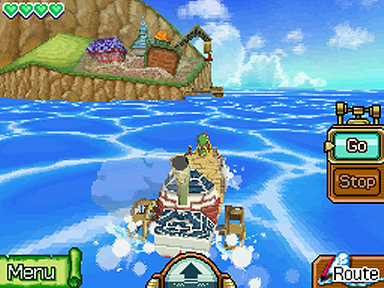
The concept of a Zelda game controlled entirely by a stylus was a little bit frightening at first, but everything made sense immediately after I got my hands on Phantom Hourglass. Whether you’re plotting your path on the sea charts, directing Link’s boomerang, or opening sealed doors by drawing appropriate shapes, the touchscreen is put to good use throughout the game. The basic movement of Link is also controlled by the stylus, and it’s surprising how natural everything feels. The innovative control scheme makes it enjoyable to perform even the simplest of actions. I’ve never had so much fun rolling around or picking up items. Phantom Hourglass has some issues with its pacing, and players are forced to make multiple visits to one of the game’s dungeons. On the whole, the dungeon designs and puzzles are on point. Direct sequels in the Zelda franchise are a rare breed, but I was grateful to have the opportunity to return to the Wind Waker universe. The simple style cel-shaded graphics were a perfect fit for small screen.Phantom Hourglass isn’t for everyone, but I think even the harshest critics would agree that Captain Linebeck is one of the greatest Zelda characters of all time.
8
Elite Beat Agents
2007
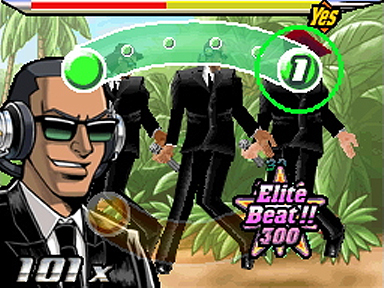
Elite Beat Agents is a unique rhythm game in which players use a stylus to tap or swipe indicated locations on the DS touch screen in time with the music. In some cases, players are simply required to touch numbered circles when instructed to do so. In other instances, the game requires them to drag and spin items around on the screen. Like any great music game, Elite Beat Agents requires excellent timing, a sense of rhythm, and an ear for music. The bottom screen is reserved for gameplay, which leaves the top screen free for a quirky story that unfolds in a comic-like fashion. The ridiculous plot is based around an elite group of government agents who dance and sing in an effort to provide encouragement and motivation for those in need. To put it another way, the agents are essentially glorified cheerleaders. The game’s soundtrack consists of 19 cover versions of pop songs. Admittedly, the track list looks weak on paper, but it works well within the structure of the game. A couple of songs are legitimately awesome, including a fantastic version of Jumpin’ Jack Flash. All in all, Elite Beat Agents is a stylish and addictive title and another perfect example of a game that wouldn’t have worked on any other system in its era.
7
Animal Crossing: Wild World
2005
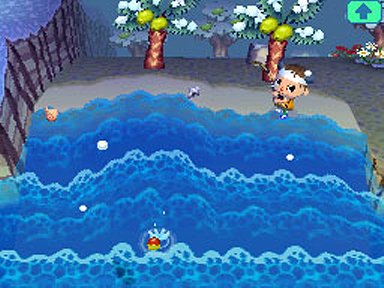
Like previous Animal Crossing games, New Leaf lets players assume the role of an individual who has recently moved into a town inhabited by friendly animals. Players aren’t given many direct goals, but the game encourages them to find employment, communicate with their animal neighbors, and make new friends. The game is well-known for its casual pacing and open-ended gameplay, and it essentially gives the player endless freedom. Animal Crossing isn’t driven by a predetermined narrative structure, and players aren’t required to do… anything, really. The fact that players aren’t required to do anything certainly doesn’t mean that there isn’t anything to do. Players can dig for treasure, spend time fishing, redecorate their homes, catch various insects, run errands for their neighbors, hunt for fossils, write letters, trade items, and design their t-shirts with the DS touchscreen. Wild World was the first game in the series to feature online play, but it didn’t venture too far from the tried-and-true Animal Crossing formula. If Wild World‘s ridiculous sales figures are any indication, it’s safe to say that the formula works. Wild World was the first game to sell over 5 million copies in Japan that didn’t involve Mario or Pokémon.
6
Castlevania: Dawn of Sorrow
2005
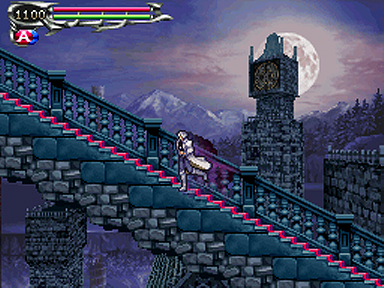
Three Castlevania games were released on the DS, but Dawn of Sorrow is the most well-rounded of the bunch. As the direct sequel to Aria of Sorrow, the game’s characters and story are more fleshed out than most Castlevania games. Dawn of Sorrow once again centers around Soma Cruz and his soul-stealing abilities. Each soul that Soma absorbs can provide him with new skills, so new abilities (like double jumping) are constantly being obtained as the game progresses. There are literally hundreds of different souls to absorb in the game, so Dawn of Sorrow will keep completionists busy for quite some time. Although Dawn of Sorrow doesn’t venture too far off the beaten path, it does make use of the DS touchscreen in a couple of interesting ways. You’ll need to tap on the screen to break ice blocks that impede your path, and you’ll be required to draw specific patterns on the screen in order to seal away enemy bosses. The touchscreen functionality is used sparingly, so the game still feels like a traditional Castlevania game. A lot of fans were critical of the new anime-inspired art style, but the gameplay, characters, and level designs were everything a Castlevania fan could ask for.
5
Mario & Luigi: Bowser’s Inside Story
2009
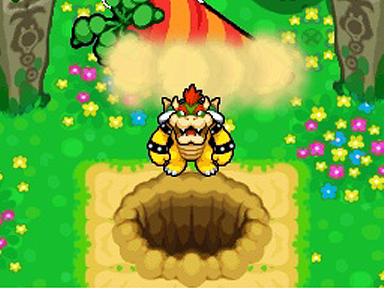
Bowser’s Inside Story is an aptly-titled game in which Mario and Luigi are inhaled into the body of their longtime nemesis. Bowser is unaware of their presence, but the Mario brothers assist him as he combats the notorious villain, Fawful, who has taken over the Mushroom Kingdom. The gameplay makes use of both screens and alternates between Bowser and the Mario brothers. The main overworld is played from an overhead view, while the second mode plays like a 2D side-scroller and takes place inside Bowser’s body. The battles are similar to previous Mario & Luigi titles, but Bowser has a host of unique abilities. If Bowser inhales his enemies, Mario and Luigi will fight them inside his body on the second screen. Nintendo gets flack for releasing a lot of sequels, but Bowser’s Inside Story took the Mario & Luigi series in a radical new direction and was one of the freshest RPGs of its generation. The DS offered so many possibilities to developers, and I always appreciate games that find creative ways to implement both screens. Bowser’s Inside Story is possibly the best Mario-themed RPG of all time. It’s always a blast to team up with Bowser, and Fawful is endlessly entertaining as the villain.
4
Advance Wars: Dual Strike
2005
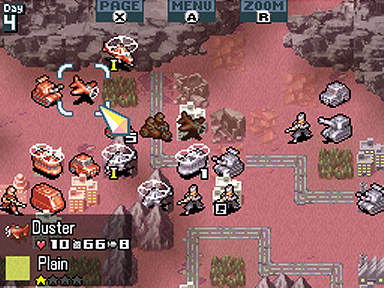
The Nintendo Wars began on the Famicom Disk System in 1988 and was followed by a Super Famicom game and three Game Boy titles before America was finally introduced to Advance Wars for the GBA in 2001. Dual Strike improves upon its predecessors in many ways. Firstly, the game makes great use of both screens on the DS. The bottom screen focuses on the battles themselves while the top screen is typically used to display terrain information and other intelligence. The two screens also provide the opportunity for players to partake in multiple battles at the same time. When battling on two fronts, players have the option of commanding both battles or letting the CPU take the reigns on one of them. After one of the battles has finished, the remaining units can join their fellow soldiers in the other front. The new features in Dual Strike don’t end there. The new “Survival” mode places players into a non-stop war of attrition, while “Combat” mode is basically a real-time rendition of the game that feels completely different from the turn-based action that the series is built on. Extensive multiplayer modes, a map editor, new units, and new weather effects round out one of the greatest strategy games of all time.
3
Pokémon Black 2 & White 2
2012
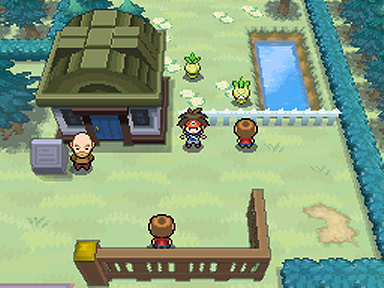
The original Red and Blue versions of Pokémon challenged players to catch as many of the game’s 150 pocket monsters as possible. Once caught, these Pokémon could be used to battle other Pokémon or be traded with other players. Each entry in the series introduced more Pokémon to the mix, and there were a staggering 649 Pokémon to catch by the time the Black and White versions were released. New gameplay mechanics were also introduced over time. Gold and Silver featured a real-time night/day system, Ruby and Sapphire introduced team battles, Diamond and Pearl made it easy for friends to trade and battle over the Internet, and Black and White introduced cycling seasons and rotation battles. Black 2 and White 2 were the first direct sequels in series history and continued to build on the solid foundation. Each entry in the series sort of felt like it was standing on the shoulders of a giant, so it’s hard to single out one specific Pokémon as the “best” one since they borrow so heavily from their predecessors. I certainly can’t begrudge anyone for liking other versions better, but I’m recognizing Black 2 and White 2 on this list simply because they look the best and objectively have the most content.
2
Mario Kart DS
2005
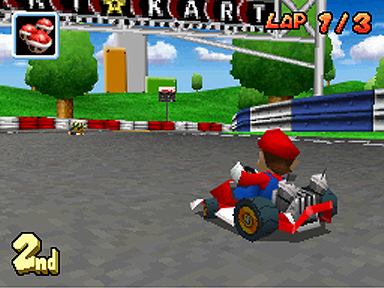
At the time of its release, Mario Kart DS was arguably the most complete game in the series. The game featured new tracks, new racers, new karts, new items, and new modes. There were over a dozen characters to race as and 36 different karts to choose from. Mario Kart DS also had some of the most inventive tracks in the entire franchise, and it even included classic tracks from previous games. In addition to the usual Grand Prix, Time Trial, and Battle Modes, Mario Kart DS also contained over fifty mini-missions that challenged you with simple goals like racing through gates, collecting coins, or battling boss characters. Perhaps the most important aspect of any Mario Kart title is its multiplayer features, and this is an area in which the DS version excelled. Up to eight people could battle or race each other locally via a WiFi connection, and (for the first time in the series) players also had the option of taking the game online. Mario Kart DS was actually the first game to utilize Nintendo’s free online service. Mario Kart DS is a game that anyone can pick up and enjoy. It’s every bit as good as the console versions that preceded it and a stronger effort than Mario Kart: Super Circuit for the Game Boy Advance.
1
The World Ends With You
2007
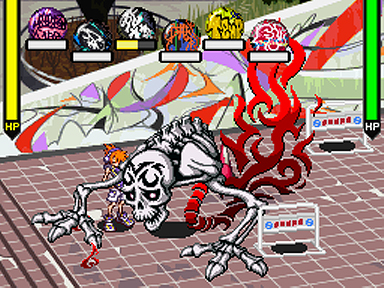
The World Ends With You features intriguing characters, fast-paced combat, catchy tunes, and a distinctive art style. The game takes place in a fictional version of the Shibuya shopping district in Tokyo, and a lot of emphasis is put on fashion. By keeping up with the latest styles, you can increase your stats. Different districts follow different trends, and you can make brands more popular in certain areas by winning battles. The fashion aspect of the game is tied into the battles with decorative pins that are collected throughout the game. These pins are activated in battle by drawing the correct swipe commands on the touch screen, and each pin is associated with a specific attack or action. The battles themselves make use of both screens. While you control a character on the bottom screen using touch commands, you’ll also be controlling a second character on the top screen with button commands. Simultaneously controlling two characters with completely different control methods might sound daunting, but everything feels like second nature in time. I didn’t even mention the story, but it’s almost as creative as the gameplay. Simply put, The World Ends with You is the most unique and stylish RPGs in the DS.

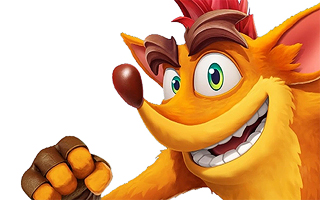

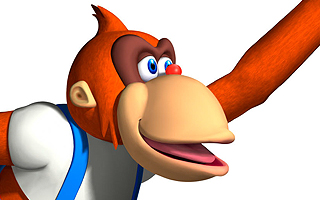
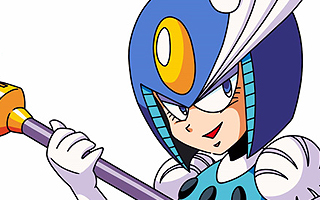
Do you agree with this list? Let us know what you think by leaving a comment below. Your opinion matters!